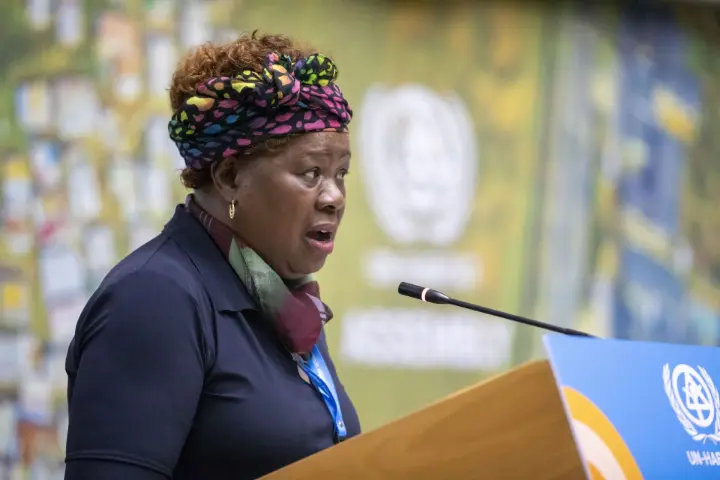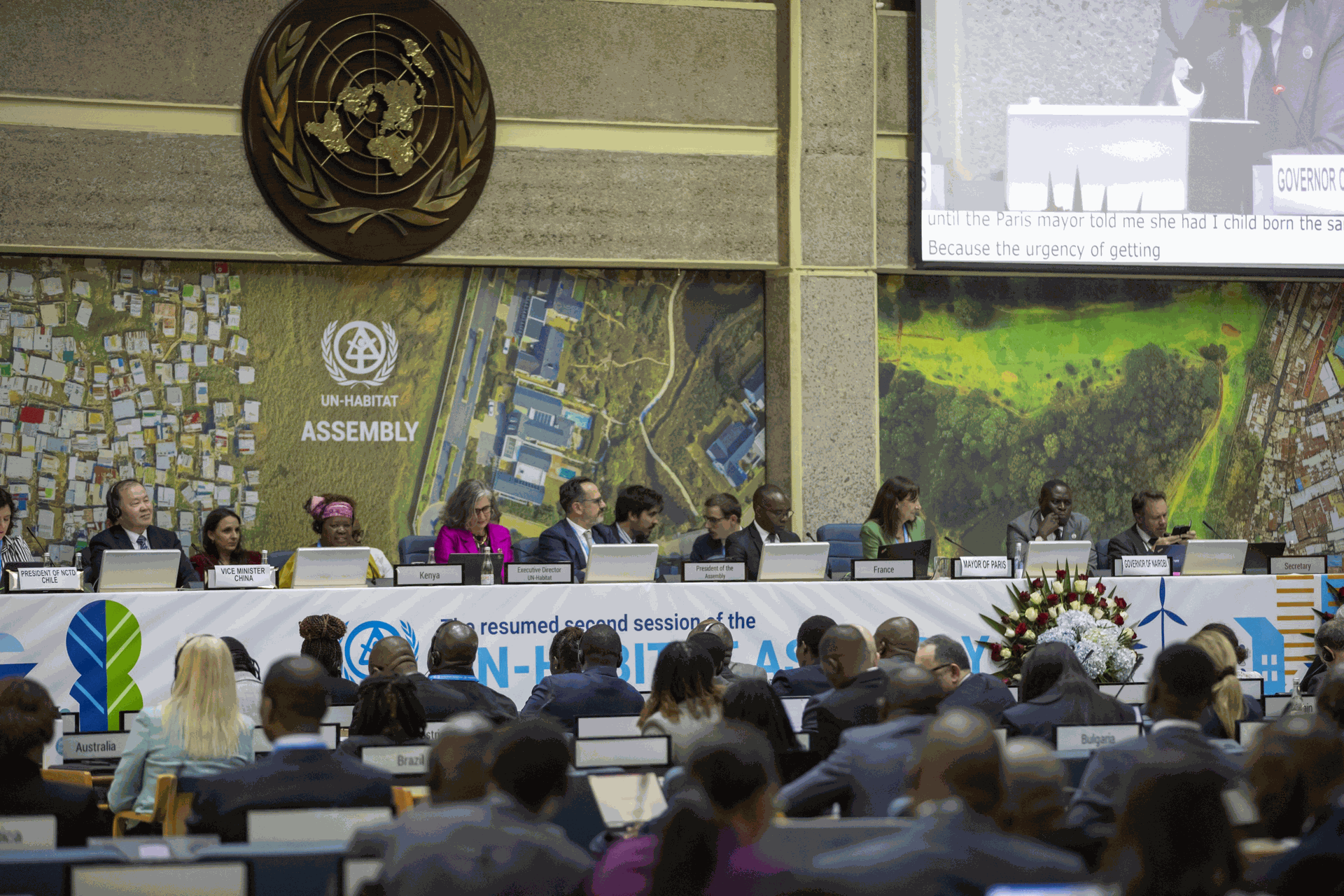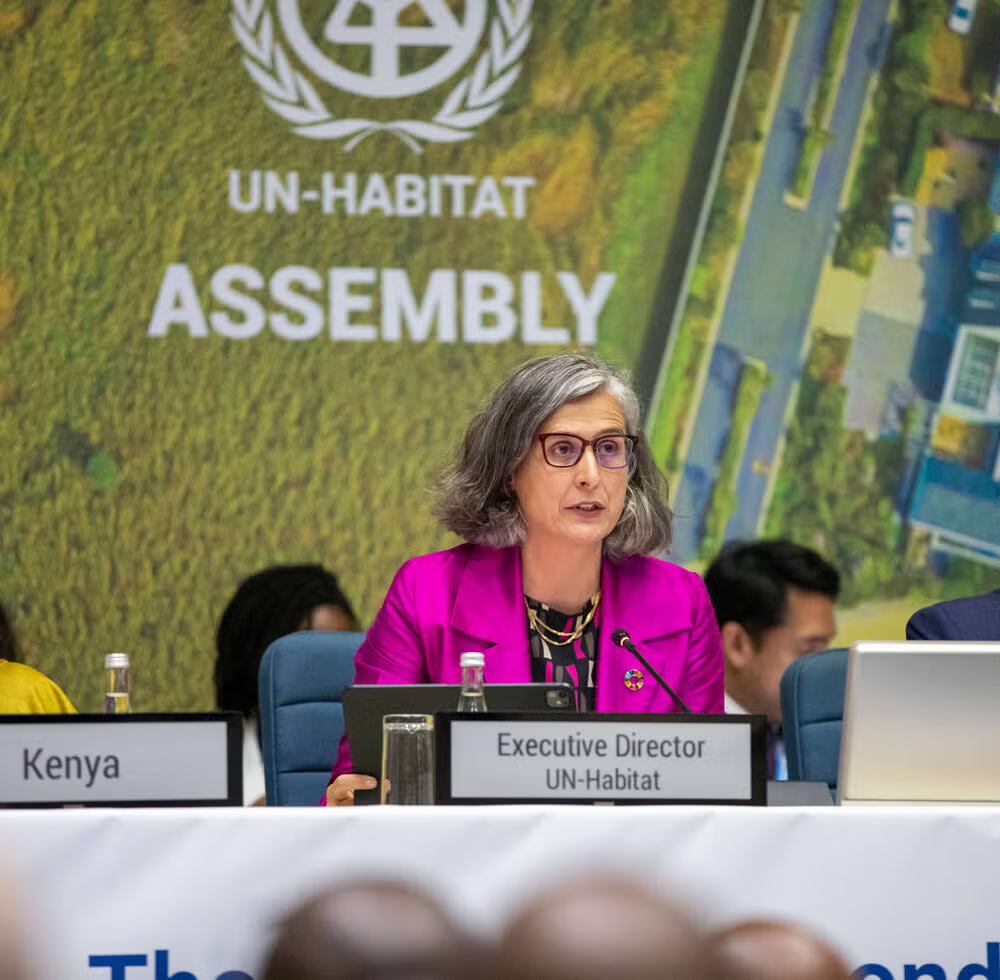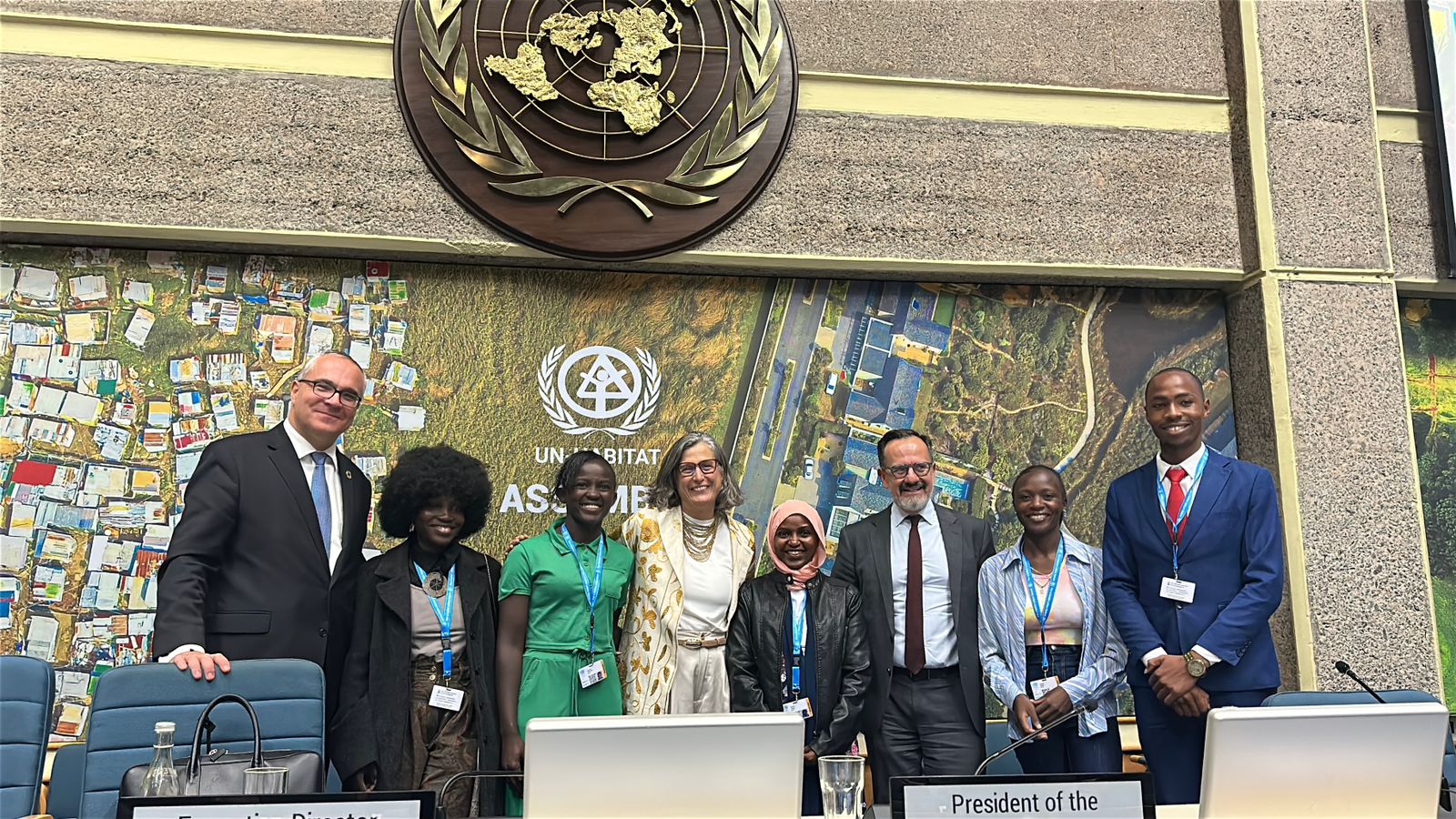The Urban Moment of Reckoning
Nairobi, the beating heart of urban innovation in Africa, played host to the resumed second session of the United Nations Habitat Assembly on 29–30 May 2025, at the UN headquarters in Gigiri. The Mto Wangu Initiative, representing community-rooted urban action from Kenya's informal settlements, was honored to participate in this critical global gathering themed “A Sustainable Urban Future Through Inclusive and Effective Multilateralism.”
This Assembly marked a historic inflection point. It was not just about policies—it was about people, places, and partnerships. It was about rethinking how cities respond to crises, climate change, migration, informality, poverty, housing, and infrastructure in the context of Agenda 2030 and the Paris Agreement.

Kenya's Minister for Lands, Housing andrban planning Hon. Alice Wahome CBS making her welcoming speech during the commence of the assembly
Key Milestone: Adoption of the Strategic Plan 2026–2029
At the very core of this session was the unanimous adoption of the UN-Habitat Strategic Plan 2026–2029, a blueprint that redefines the role of urban governance in addressing global inequality, climate vulnerability, and spatial injustice.
The Strategic Plan pivots around four interlinked domains of change:
- Reduced Spatial Inequality and Poverty in Communities
- Enhanced Shared Prosperity of Cities and Regions
- Strengthened Climate Action and Urban Environmental Resilience
- Effective Urban Crisis Prevention and Response
The Plan demands a reorganization of governance and investment at all levels—recognizing cities as active agents, not mere recipients of development.
Key Takeaways for Local Stakeholders:
- Local authorities and grassroots organizations will be central to the localization of SDGs.
- A framework is being designed to support early warning systems and urban crisis recovery.
- Emphasis is being placed on resilient infrastructure, digital inclusion, and sustainable housing.
Special Events Recap: Urban Action at the Nexus of Policy, Climate and Inclusion

The resumed UN Habitat Assembly 2025 in session, Nairobi
1. Urban Climate and Environment Briefing: Towards COP30 and WUF13
This strategic press event laid the groundwork for a new era of climate-urban integration. UN-Habitat and UNEP launched the Greener Cities Partnership, promoting:
- Low-emission buildings
- Nature-based solutions
- Inclusive, biodiverse planning frameworks
Voices from Brazil, Azerbaijan, Egypt, and ICLEI called for cities to be front and center in NDC 3.0—the next iteration of Nationally Determined Contributions. The concept of mutirão (collective civic action) was introduced as a climate cooperation model for COP30 in Belém, Brazil.
Panelists urged more funding to scale proven models for urban adaptation, cooling strategies, and green transport.
2. Quito+10 and Housing Justice
Marking a decade since the New Urban Agenda was adopted in Quito, this session was a sobering assessment of the global housing crisis.
3 billion people lack adequate housing. 1.1 billion reside in slums. Over 300 million are homeless.
Government ministers from South Africa, Malaysia, Morocco, Liberia, and Cuba highlighted:
- Housing as a human right
- The use of state-financed mortgages and land subsidies
- Innovative models of social and rental housing
- Integration of housing into climate resilience and health systems
A major outcome was the call to enshrine housing at the center of national urban strategies. The NUA (New Urban Nairobi) is no longer aspirational—it must be binding.
3. Refugees and Urban Displacement: Reframing the Paradigm
The High-Level Panel on Refugees and Urban Displacement reimagined displacement as an urban development issue rather than a humanitarian crisis. Kenya, Somalia, Ethiopia, the World Bank, and UNHCR emphasized:
- Municipal inclusion of refugees and IDPs
- Urban financing models to support host communities
- The transition from camp-based to integrated urban services
The during the Resumed Session of the UN-Habitat Assembly 2025 in Nairobi.
Examples from Uganda and Ethiopia showed how urban planning, economic empowerment, and service delivery can be structured to benefit both refugees and locals.
As Mr. Elmi Mohamoud Nur (Somalia) put it: “This is not charity. It’s a shared investment in urban futures.”
4. Donor Roundtable: Resource Mobilization for Action
With dwindling Official Development Assistance (ODA), this session sought to rally partners behind core, flexible funding for UN-Habitat. Countries like Brazil, Spain, Saudi Arabia, and Azerbaijan spoke in favor of:
- Moving beyond project-based funding
- Supporting local-level innovation
- Providing multi-year predictable resources

UN-Habitat’s Executive Director Anacláudia Rossbach put it best: "Our teams on the ground have worked exceptionally hard to stay within budget delivering strong outputs and finding innovative ways to contribute to national policies." However, the challenges of decreasing development aid and the call for more predictable, flexible funding were made eviden
The message was clear: Without solid finances, the Strategic Plan risks remaining unfulfilled. Donors must align their giving to community-driven and city-level programs, not just high-level goals.
Mto Wangu at the Assembly: Reflections from the Ground

Representatives from Mto Wangu Initiative engaging with UN-Habitat Outgoing President Maimunah Mohd Sharif (third right), Executive Director Anacláudia Rossbach (fourth left), and Deputy Executive Director Dr. Michal Mlynár (left) during the Resumed Session of the UN-Habitat Assembly 2025 in Nairobi.
As a grassroots initiative grounded in Nairobi’s informal settlements, our presence at the Assembly reaffirmed our role in the global urban conversation. We learned, networked, shared insights, and most importantly, saw that the voices from our communities matter.
Our key takeaways:
- Climate solutions must be community-led and context-specific.
- Housing needs urgent investment and political will.
- The urban agenda must include displaced persons and marginalized groups.
- Funding must flow to local actors, not just national bodies.
What We Saw:
- An urban governance system ready for transformation, but still distant from the lived realities of the urban poor.
- A growing recognition that youth, women, and community groups must be co-creators, not afterthoughts.
- Exciting innovations in data-driven slum upgrading, digital mapping for land rights, and green public spaces.
What We Demand:
- That local CSOs be financed directly to pilot SDG-linked solutions.
- That governments treat housing and sanitation with urgency equal to health and education.
- That inclusion be not symbolic but systemic—in budgeting, legislation, and monitoring.
What Next? From Gigiri to the Ground
The resumed UN-Habitat Assembly was not the end of a conversation—it was the beginning of a global implementation decade. From informal traders in Nairobi to displaced families in Somalia, the urban transition must work for all.
The Mto Wangu Initiative leaves the Assembly resolved to:
- Engage with national and county urban planning processes
- Document community innovations for policy scaling
- Hold leaders accountable to the Strategic Plan's promises
Because in the words of UN-Habitat Executive Director Anacláudia Rossbach:
“If we do not act now—boldly, inclusively, and urgently—cities will become our greatest liability. But if we act together, they will become our greatest strength.”
We are choosing the latter.